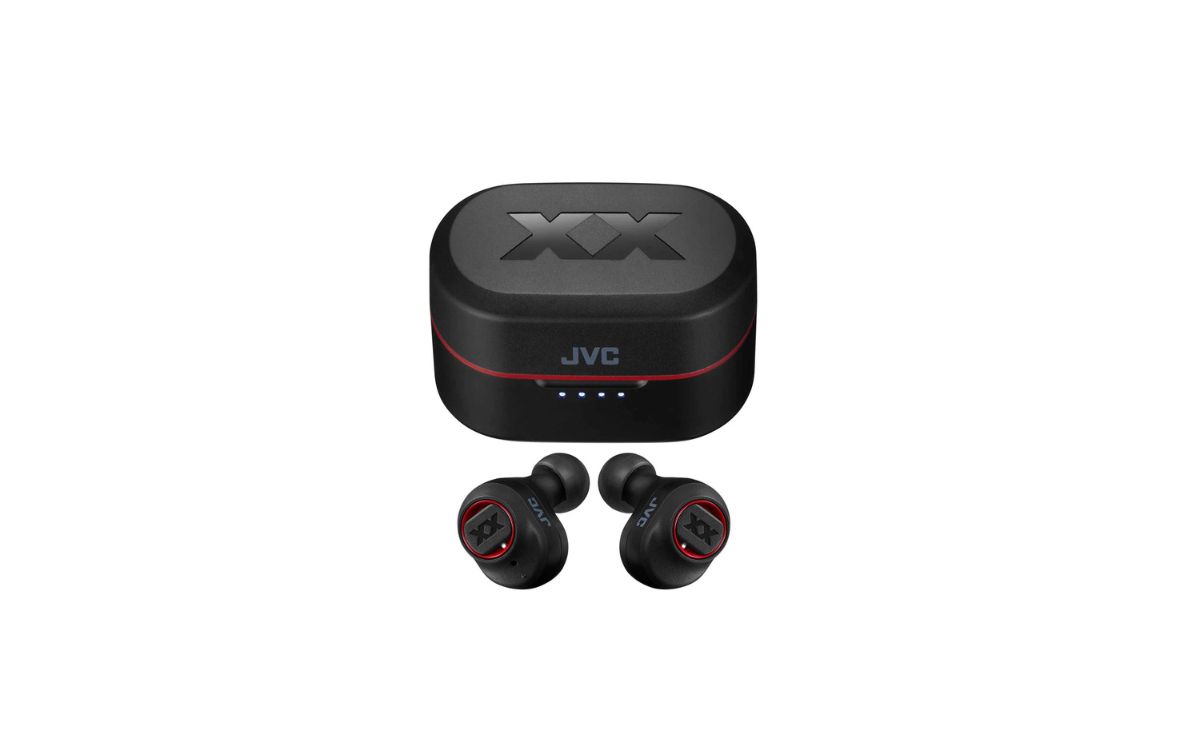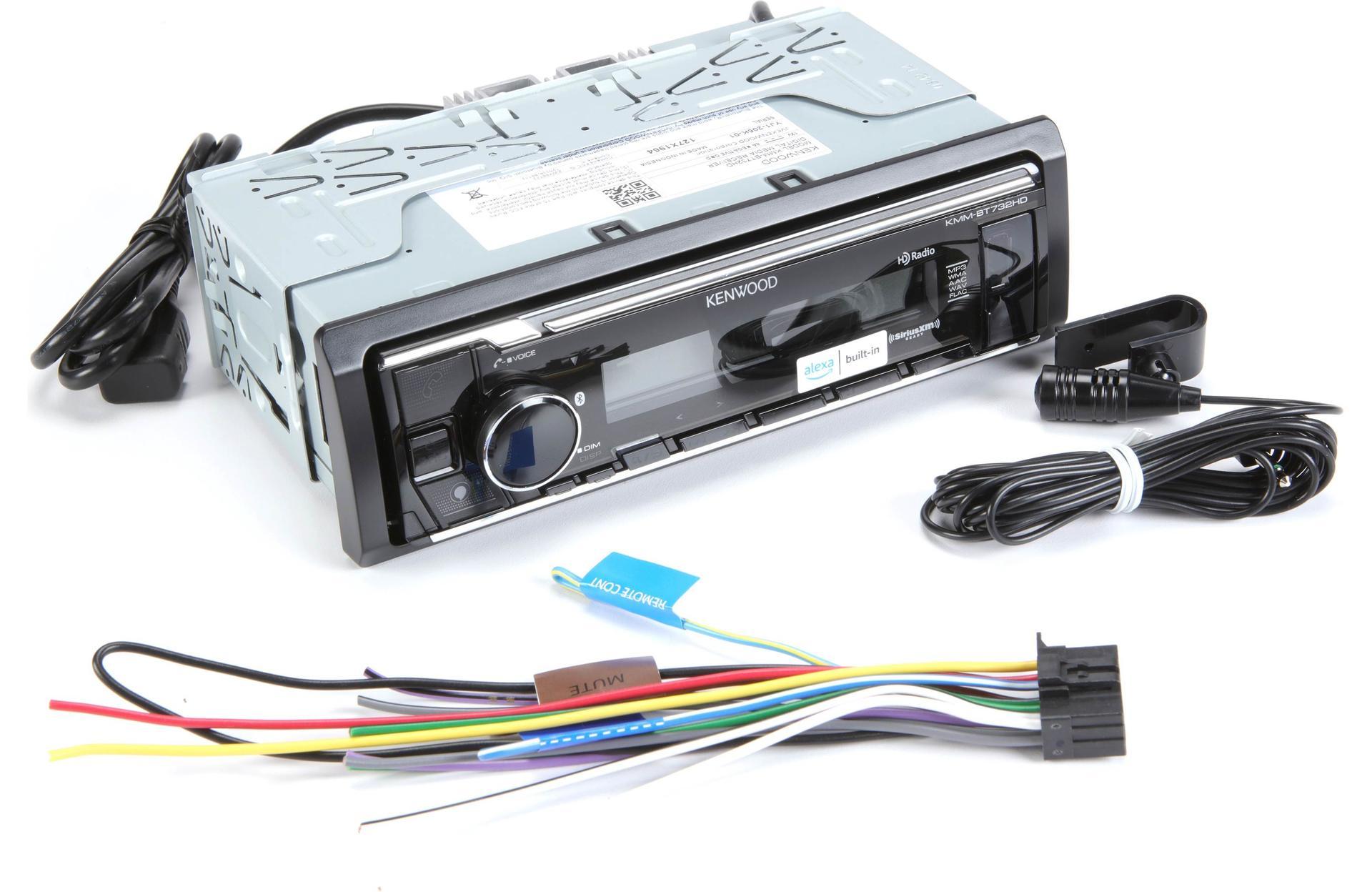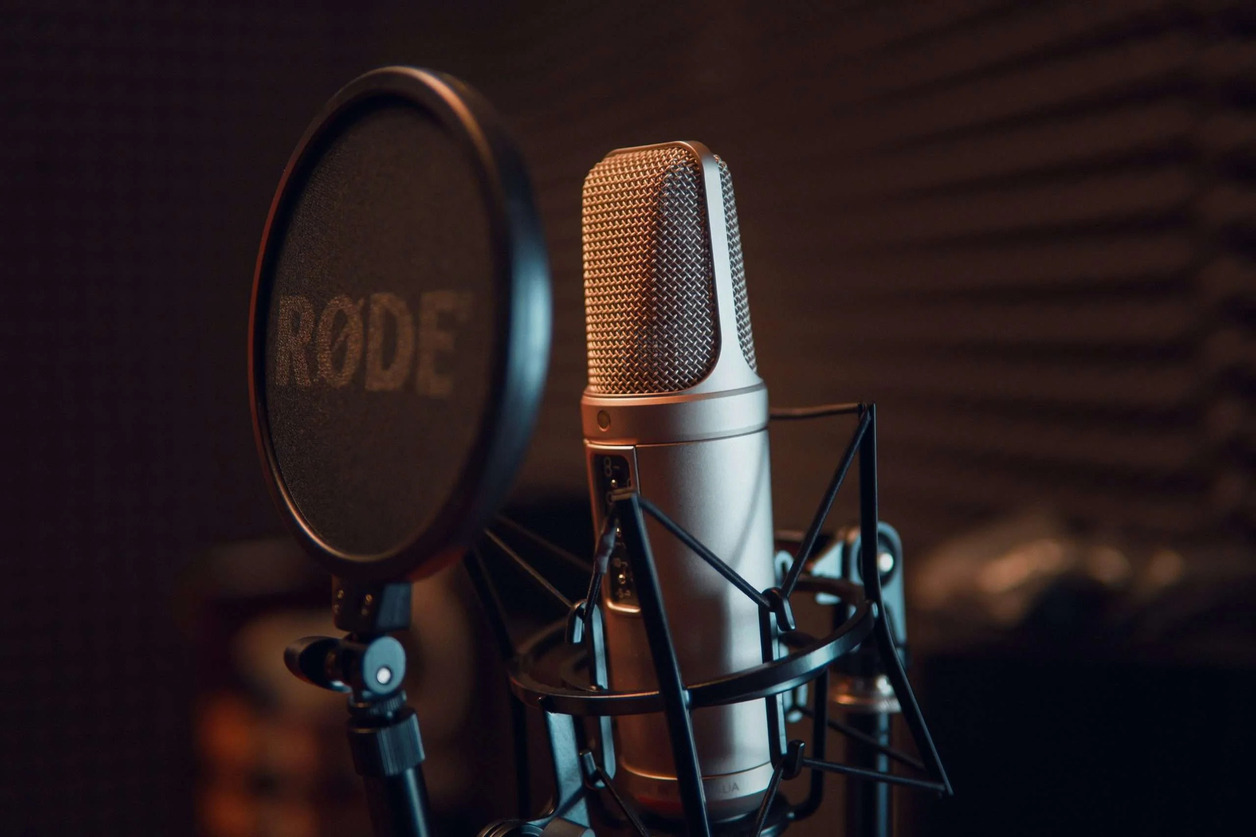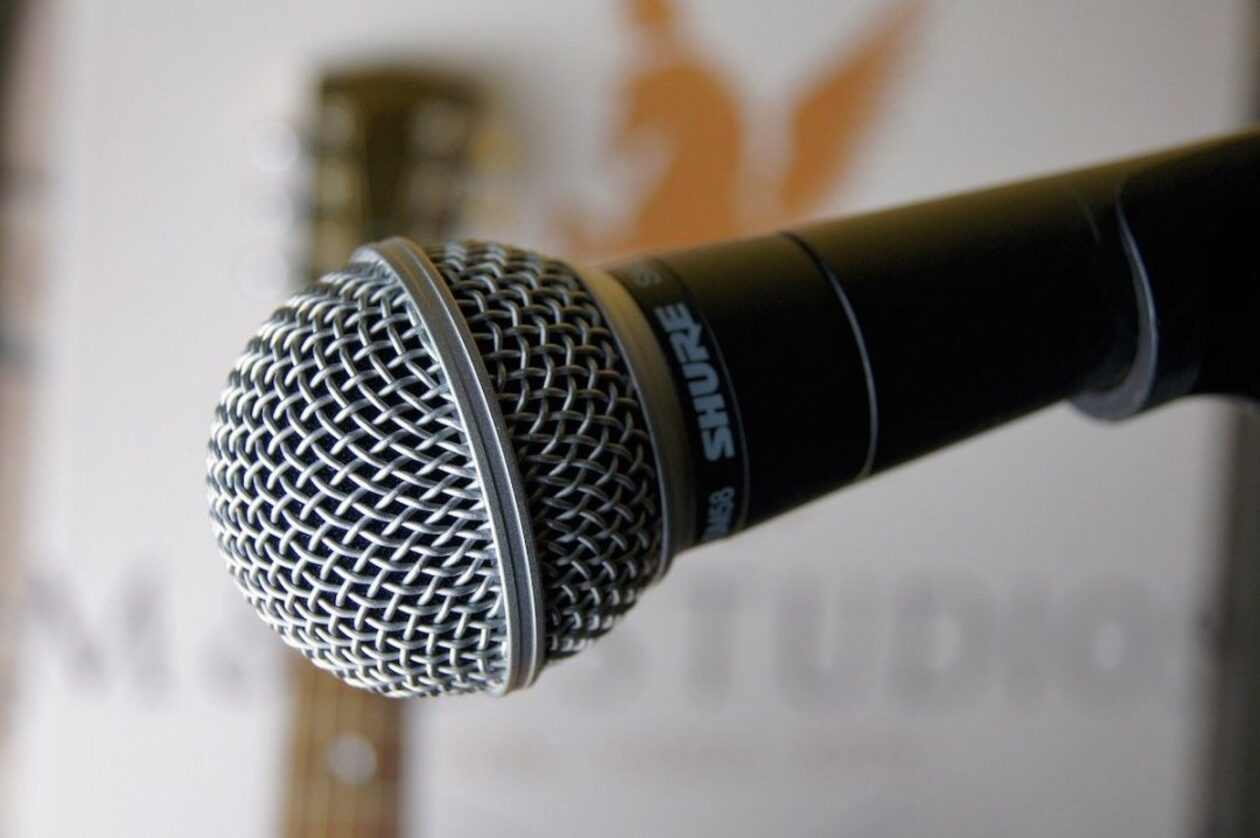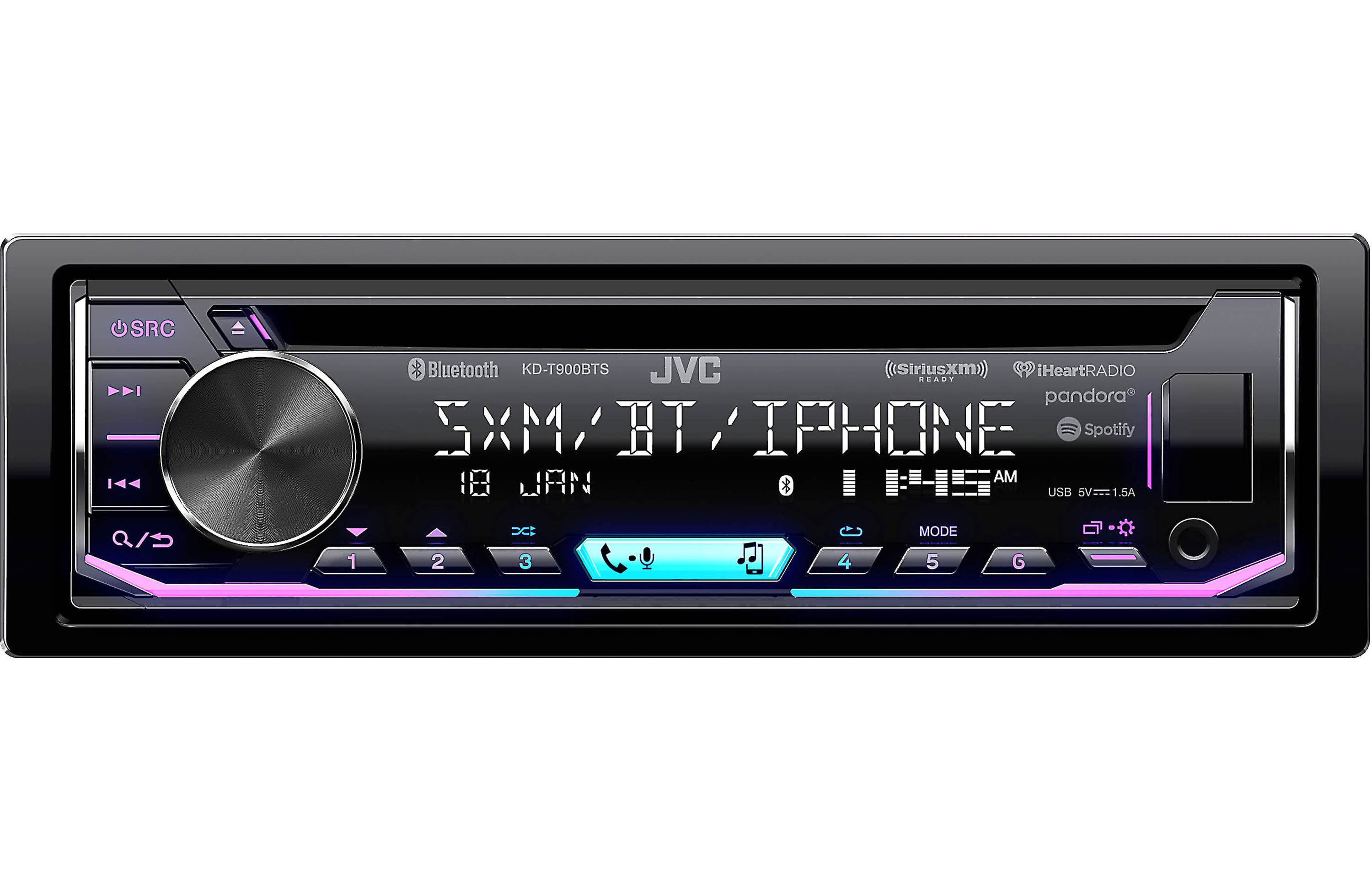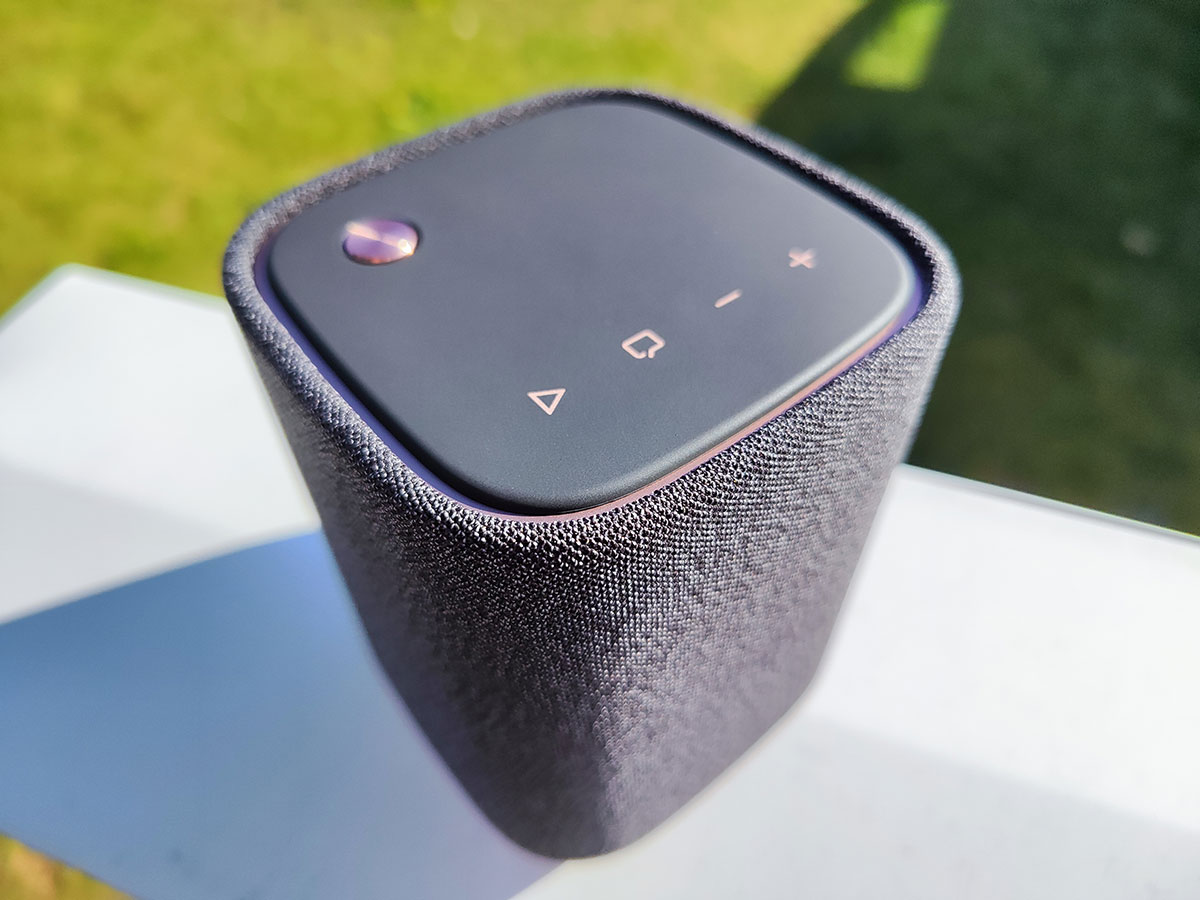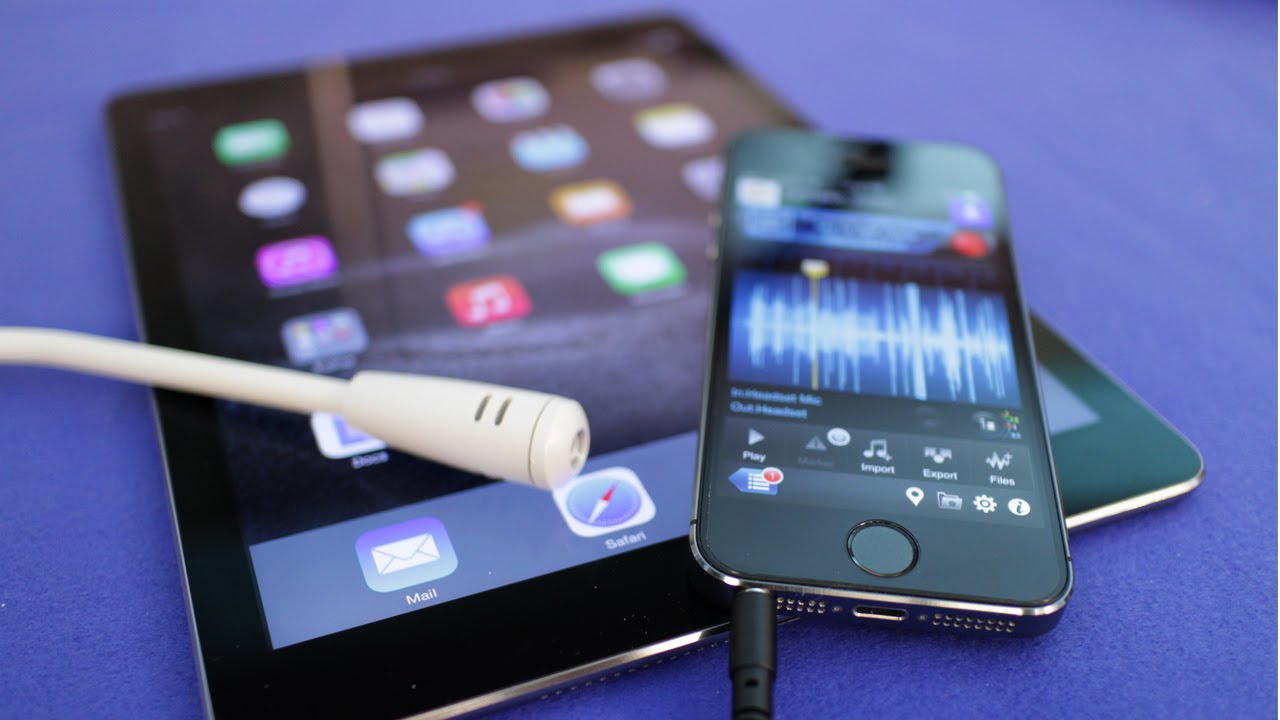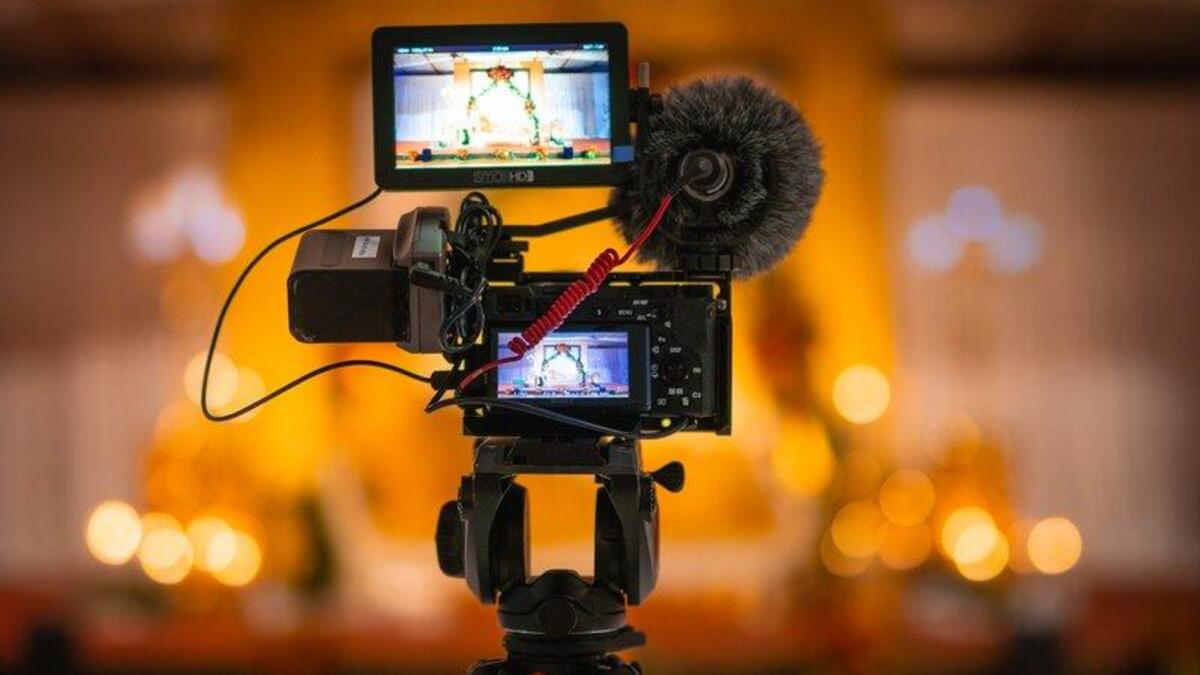Home>Devices & Equipment>Microphone>How To Connect Bluetooth Microphone
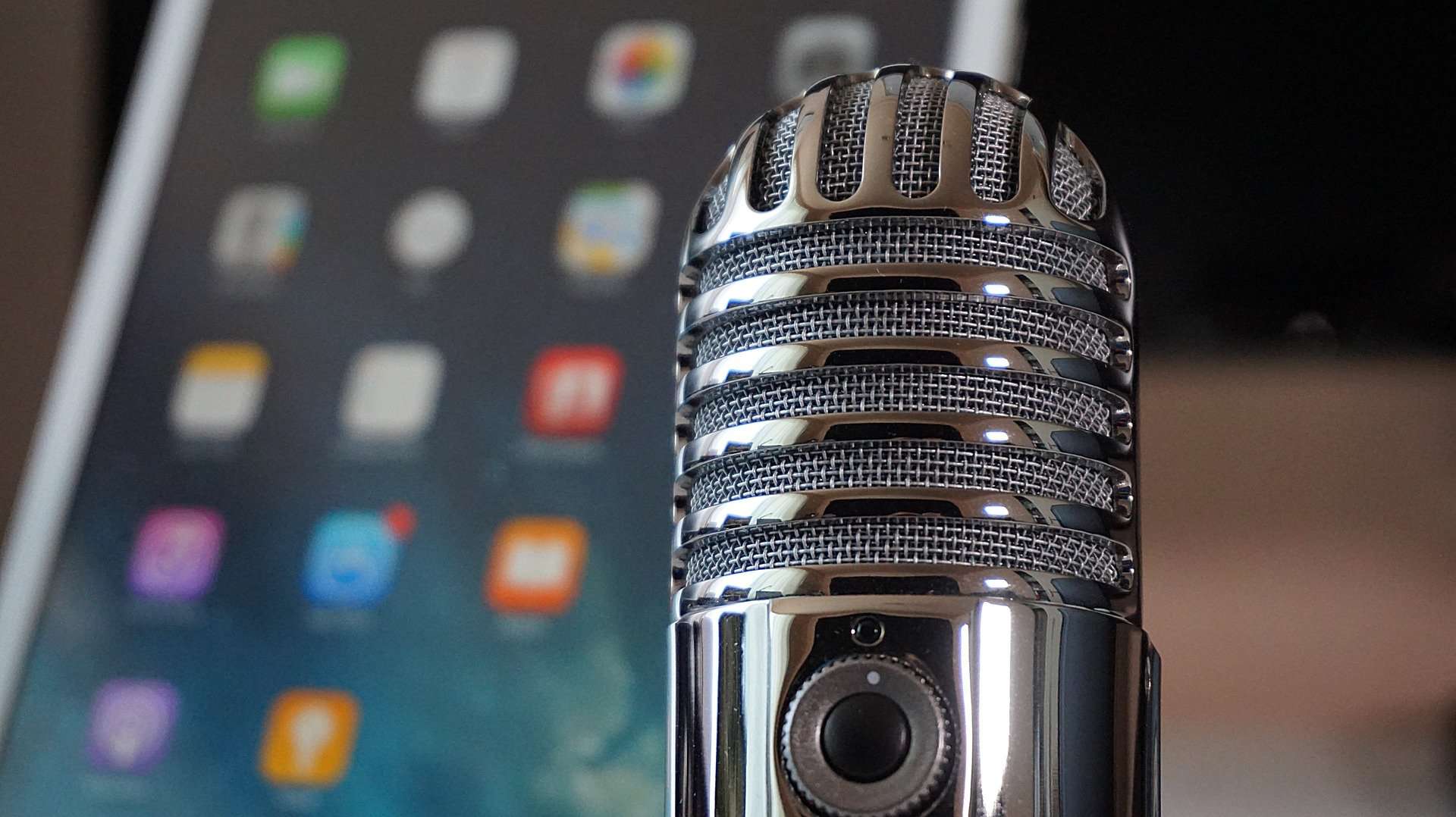

Microphone
How To Connect Bluetooth Microphone
Published: February 17, 2024
Learn how to easily connect a Bluetooth microphone and enhance your audio experience. Follow simple steps to pair your microphone with any compatible device. Ideal for improving your sound quality during calls, recordings, and more.
(Many of the links in this article redirect to a specific reviewed product. Your purchase of these products through affiliate links helps to generate commission for AudioLover.com, at no extra cost. Learn more)
Table of Contents
Introduction
Introducing the World of Bluetooth Microphones
In a world where wireless technology reigns supreme, Bluetooth microphones have emerged as versatile tools for various applications. Whether you're a content creator, public speaker, musician, or simply someone who values seamless connectivity, Bluetooth microphones offer a convenient and cable-free solution for capturing high-quality audio. This article delves into the realm of Bluetooth microphones, providing insights into their functionality, the process of connecting them to compatible devices, troubleshooting common connection issues, and tips for optimizing their performance.
Bluetooth microphones have revolutionized the way we capture and transmit audio. Unlike traditional wired microphones, which are tethered to recording devices or sound systems, Bluetooth microphones offer freedom of movement and flexibility. From live performances to virtual meetings, these wireless marvels have become indispensable in a wide range of settings.
As we embark on this journey through the intricacies of Bluetooth microphones, it's essential to grasp the fundamental principles that underpin their operation. Understanding how these devices function and how they communicate with other Bluetooth-enabled devices is crucial for harnessing their full potential. Whether you're a novice exploring the possibilities of wireless audio or a seasoned professional seeking to fine-tune your setup, the following sections will provide valuable insights into the world of Bluetooth microphones.
Understanding Bluetooth Microphones
Bluetooth microphones, often referred to as wireless microphones, utilize Bluetooth technology to establish a seamless connection with compatible devices, such as smartphones, tablets, computers, and audio interfaces. These compact yet powerful devices incorporate a built-in Bluetooth transmitter, allowing them to wirelessly transmit audio signals to the paired receiver, eliminating the constraints imposed by traditional wired microphones.
One of the key advantages of Bluetooth microphones is their portability and freedom of movement. Whether you’re delivering a presentation, recording vocals in a studio, or engaging in live performances, the absence of cumbersome cables enables unparalleled mobility and flexibility. This makes Bluetooth microphones a popular choice among performers, public speakers, content creators, and audio enthusiasts.
Bluetooth microphones operate within the 2.4 GHz frequency band, which is commonly used for various wireless applications. This frequency band offers a balance between signal range, data transfer speed, and resistance to interference, ensuring reliable audio transmission in diverse environments. Additionally, Bluetooth technology employs advanced encryption protocols to secure the communication between the microphone and the paired device, safeguarding against unauthorized access and ensuring privacy.
When it comes to the design and functionality of Bluetooth microphones, manufacturers offer a diverse array of options to cater to different user preferences and requirements. From handheld dynamic microphones to lavalier (lapel) microphones and headset microphones, the market encompasses a broad spectrum of designs tailored for specific applications. Furthermore, advancements in battery technology have extended the operational duration of Bluetooth microphones, allowing for prolonged use without the need for frequent recharging.
Understanding the capabilities and limitations of Bluetooth microphones is essential for leveraging their potential in various scenarios. Whether you’re exploring the creative possibilities of wireless audio or seeking to streamline your workflow, the next section will delve into the process of pairing your Bluetooth microphone with a compatible device, unlocking a world of wireless audio convenience.
Pairing Your Bluetooth Microphone with a Device
Pairing a Bluetooth microphone with a compatible device is a straightforward process that involves establishing a wireless connection between the two devices. Whether you’re using a smartphone, tablet, computer, or audio interface, the following steps outline the typical procedure for pairing a Bluetooth microphone:
- Activate Pairing Mode: Begin by turning on your Bluetooth microphone and activating its pairing mode. This mode is usually initiated by pressing and holding a designated button or switch until the device’s indicator light flashes or changes color, indicating that it is ready to be paired.
- Access Device Settings: On the device to which you wish to connect the Bluetooth microphone, navigate to the Bluetooth settings menu. This can usually be found in the device’s system settings or control center.
- Scan for Devices: Within the Bluetooth settings menu, initiate a scan or search for available Bluetooth devices. The name or model of your Bluetooth microphone should appear in the list of discoverable devices.
- Initiate Pairing: Once your Bluetooth microphone is detected, select it from the list of available devices to initiate the pairing process. Depending on the device, you may be prompted to enter a pairing code or confirm the connection.
- Confirmation and Connection: Upon successful pairing, your device will display a confirmation message, indicating that the Bluetooth microphone is now connected and ready for use.
It’s important to note that the specific pairing procedure may vary slightly depending on the make and model of your Bluetooth microphone and the device to which you are connecting it. Always refer to the user manual provided with your Bluetooth microphone for detailed instructions tailored to your device’s features and functionalities.
Once your Bluetooth microphone is successfully paired with your device, you can begin utilizing it to capture high-quality audio in a wireless manner. Whether you’re conducting interviews, recording vocals, or engaging in live performances, the freedom of movement offered by Bluetooth microphones enhances your creative and professional endeavors.
However, in some cases, you may encounter common connection issues when attempting to pair your Bluetooth microphone with a device. The next section will address these issues and provide troubleshooting tips to ensure a seamless and stable connection between your Bluetooth microphone and your preferred device.
Troubleshooting Common Connection Issues
While pairing a Bluetooth microphone with a device is generally a straightforward process, occasional connection issues may arise, impacting the stability and functionality of the wireless link. Understanding and addressing these common issues can help ensure a reliable and uninterrupted audio transmission. Here are some prevalent connection issues and troubleshooting tips:
- Interference and Range Limitations: Bluetooth signals can be susceptible to interference from other wireless devices, physical obstructions, or environmental factors. Ensure that there are no significant obstructions between the Bluetooth microphone and the paired device, and minimize the distance between the two to optimize signal strength.
- Battery Level and Power: Check the battery level of your Bluetooth microphone to ensure it has an adequate charge. Low battery levels can lead to unstable connections and signal dropouts. If applicable, replace or recharge the microphone’s batteries to maintain a reliable connection.
- Software and Firmware Updates: Ensure that both the Bluetooth microphone and the paired device have the latest software or firmware updates installed. Manufacturers often release updates to address connectivity issues and enhance compatibility with various devices.
- Reset and Re-Pair: If you encounter persistent connection problems, consider resetting the Bluetooth settings on both the microphone and the paired device. This process often involves clearing existing pairings and re-establishing the connection from scratch.
- Signal Interference: If you operate in an environment with numerous wireless devices, such as crowded event venues or densely populated urban areas, signal interference may disrupt the Bluetooth connection. Attempt to minimize competing wireless signals or relocate to a less congested area.
By addressing these common connection issues and implementing the suggested troubleshooting tips, you can enhance the stability and performance of your Bluetooth microphone, ensuring a seamless wireless audio experience. Additionally, familiarizing yourself with the specific troubleshooting guidelines provided by the manufacturer can offer tailored solutions for addressing connectivity challenges.
With a clear understanding of the potential connection issues and the corresponding troubleshooting strategies, you can confidently navigate the realm of wireless audio and harness the full capabilities of your Bluetooth microphone. However, proactive measures can also contribute to maintaining a strong Bluetooth connection, which will be explored in the following section.
Tips for Maintaining a Strong Bluetooth Connection
Ensuring a robust and stable Bluetooth connection is essential for maximizing the performance and reliability of your Bluetooth microphone. Implementing the following tips can help maintain a strong and consistent connection, enhancing your overall wireless audio experience:
- Optimal Placement: Position the Bluetooth microphone and the paired device in close proximity to each other to minimize signal degradation caused by distance. Maintaining line-of-sight between the devices whenever possible can further enhance signal strength.
- Signal Integrity: Avoid operating the Bluetooth microphone in areas with substantial wireless interference, such as near large electronic equipment or in crowded wireless environments. By minimizing signal interference, you can preserve the integrity of the Bluetooth connection.
- Regular Maintenance: Periodically inspect and clean the Bluetooth microphone’s transceiver and antenna to ensure optimal signal transmission. Dust and debris accumulation can impede signal reception and weaken the connection.
- Update Firmware: Stay informed about firmware updates released by the manufacturer of your Bluetooth microphone. Installing the latest firmware can address connectivity issues and introduce performance enhancements.
- Power Management: Monitor the battery levels of your Bluetooth microphone and ensure that they are adequately charged before usage. Low battery levels can compromise the stability of the Bluetooth connection.
- Utilize Quality Equipment: Invest in reputable Bluetooth microphones and compatible devices to minimize compatibility issues and optimize the wireless audio transmission. Quality equipment often incorporates robust Bluetooth technology for enhanced connectivity.
By adhering to these proactive measures and best practices, you can sustain a strong Bluetooth connection, mitigating potential connectivity challenges and optimizing the performance of your Bluetooth microphone. Additionally, maintaining awareness of environmental factors and technological advancements can further contribute to a seamless wireless audio experience.
As you integrate these tips into your wireless audio setup, you can confidently explore the creative and professional possibilities offered by Bluetooth microphones, leveraging their wireless convenience to elevate your audio endeavors. With a strong and reliable Bluetooth connection, you are well-equipped to capture pristine audio in diverse settings and applications.
Now that we’ve explored the intricacies of maintaining a strong Bluetooth connection, let’s reflect on the valuable insights garnered throughout this exploration of Bluetooth microphones in the concluding section.
Conclusion
Embarking on a journey through the realm of Bluetooth microphones has unveiled the remarkable versatility and convenience offered by these wireless audio solutions. From their seamless pairing process to the troubleshooting of common connection issues and the implementation of strategies for maintaining a strong Bluetooth connection, the comprehensive understanding gained from this exploration empowers users to harness the full potential of Bluetooth microphones in diverse applications.
Bluetooth microphones have transcended the limitations of traditional wired setups, offering unparalleled mobility and flexibility for content creators, performers, public speakers, and audio enthusiasts. Their integration of advanced Bluetooth technology, coupled with diverse design options, has solidified their position as indispensable tools for capturing high-quality audio in a wireless manner.
As we navigate the evolving landscape of wireless audio, the knowledge and insights gained from this exploration serve as a compass, guiding users towards seamless connectivity, optimal performance, and a heightened appreciation for the capabilities of Bluetooth microphones. By embracing the tips for maintaining a strong Bluetooth connection and understanding the nuances of pairing these devices with compatible equipment, users can confidently integrate Bluetooth microphones into their creative and professional endeavors.
Ultimately, the world of Bluetooth microphones continues to evolve, driven by technological innovations and user-centric design principles. As users continue to explore the creative and practical possibilities offered by wireless audio solutions, the foundational understanding and practical guidance provided in this exploration will serve as a valuable resource, empowering individuals to embark on their wireless audio journeys with confidence and proficiency.
With a newfound appreciation for the seamless connectivity and freedom of movement facilitated by Bluetooth microphones, users are poised to elevate their audio experiences, transcend spatial constraints, and embrace the boundless potential of wireless audio technology.
As we bid adieu to this exploration, the enduring principles and practical insights garnered will undoubtedly resonate in the endeavors of those who seek to amplify their voices, capture pristine audio, and immerse themselves in the transformative realm of Bluetooth microphones.

